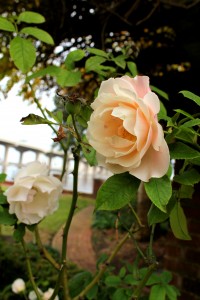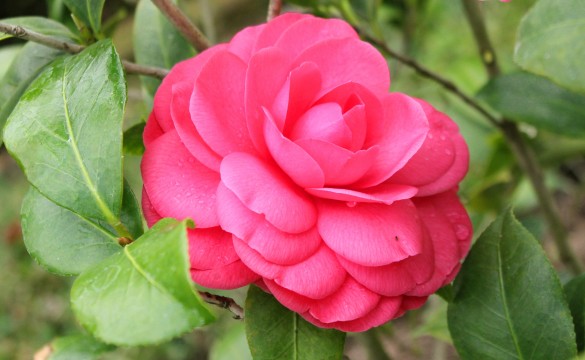Written by Ginny Mirzoyeva, Marketing Intern
Camellias are perennial shrubs that usually bloom from fall to early spring. They do well in moderate climates, warm summers and mild winters are usually best. However if the weather is to hot and humid, or too cold and windy, the Camellias will not fare well. Camellias are quite common among home gardeners. The two main types growing in our garden are the Japonica and the Sasanqua. Although it is possible to grow and plant camellias, the seeds could take up to five years to bloom. A much simpler and less time consuming method is to purchase them from nurseries as transplants. There are few noteworthy differences between the Japonica and the Sasanqua Camellias.
 The Camellia Japonica has larger leaves and flowers than the Sasanqua. The Japonica blooms in the late winter or early spring. The Sasanqua on the other hand blooms mostly in the fall and early winter. The Japonica is a taller plant reaching anywhere from to 12 feet all the way to 25 feet in height. The Sasanqua is smaller and grows from four to only about 15 feet in height. While Camellia Sasanqua can handle dry soil, Japonica requires plenty of moisture and is a bit less tolerant to drought. Both plants do best in partial shade.
The Camellia Japonica has larger leaves and flowers than the Sasanqua. The Japonica blooms in the late winter or early spring. The Sasanqua on the other hand blooms mostly in the fall and early winter. The Japonica is a taller plant reaching anywhere from to 12 feet all the way to 25 feet in height. The Sasanqua is smaller and grows from four to only about 15 feet in height. While Camellia Sasanqua can handle dry soil, Japonica requires plenty of moisture and is a bit less tolerant to drought. Both plants do best in partial shade.
Planting and maintenance is similar among both types of Camellias. When transplanting into the garden plant them in the ground at the same depth and twice the diameter of the pot they were originally growing in. All Camellias require moist, well-draining, and slightly acidic soil. Spread a 1-2 inch layer of mulch around the plant to retain moisture and prevent weed growth. While the plants are still new in the garden make sure they receive enough water to retain moisture and promote growth. Take care to not over water your Camellias as excess water can cause rotting in the roots. If the Camellias are in need of more acidity in their soil during their




For the reason that the admin of this site is working, no question very rapidly it will
be renowned, due to its feature contents.